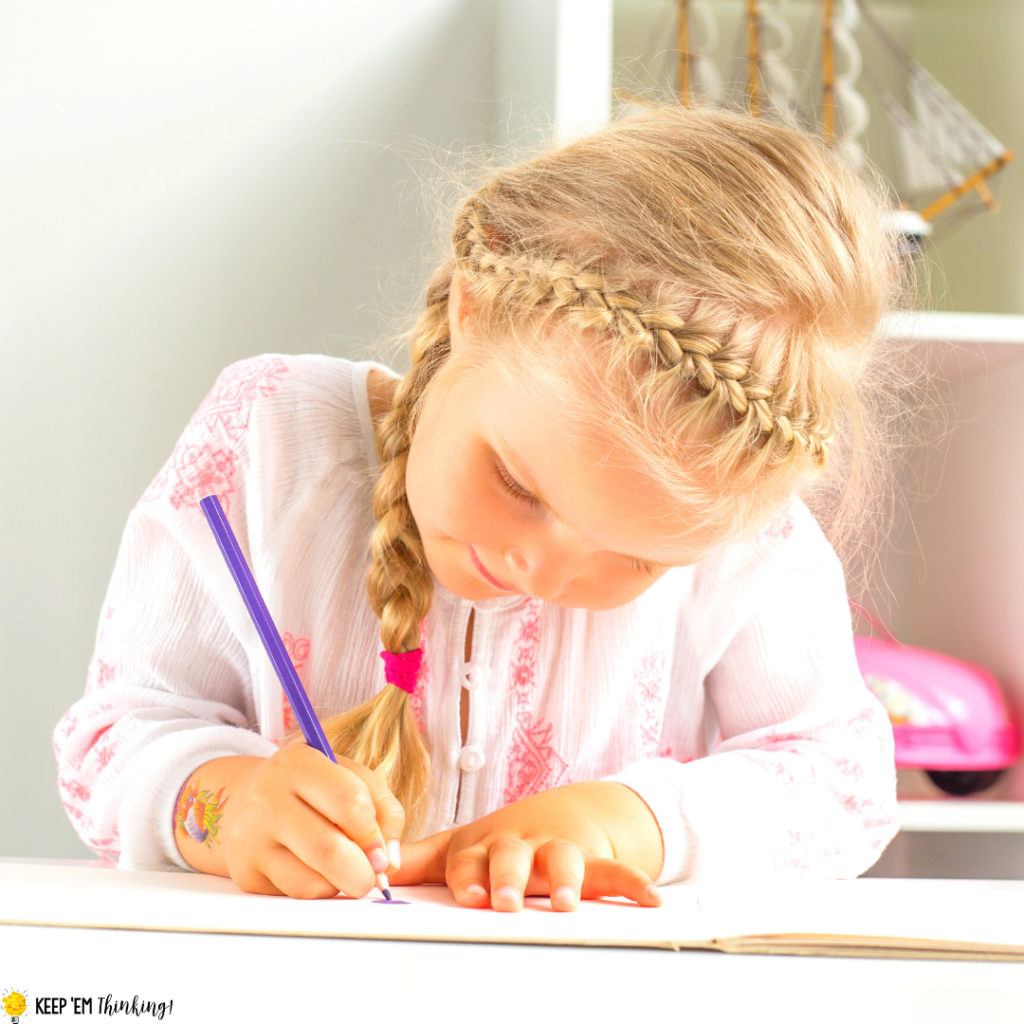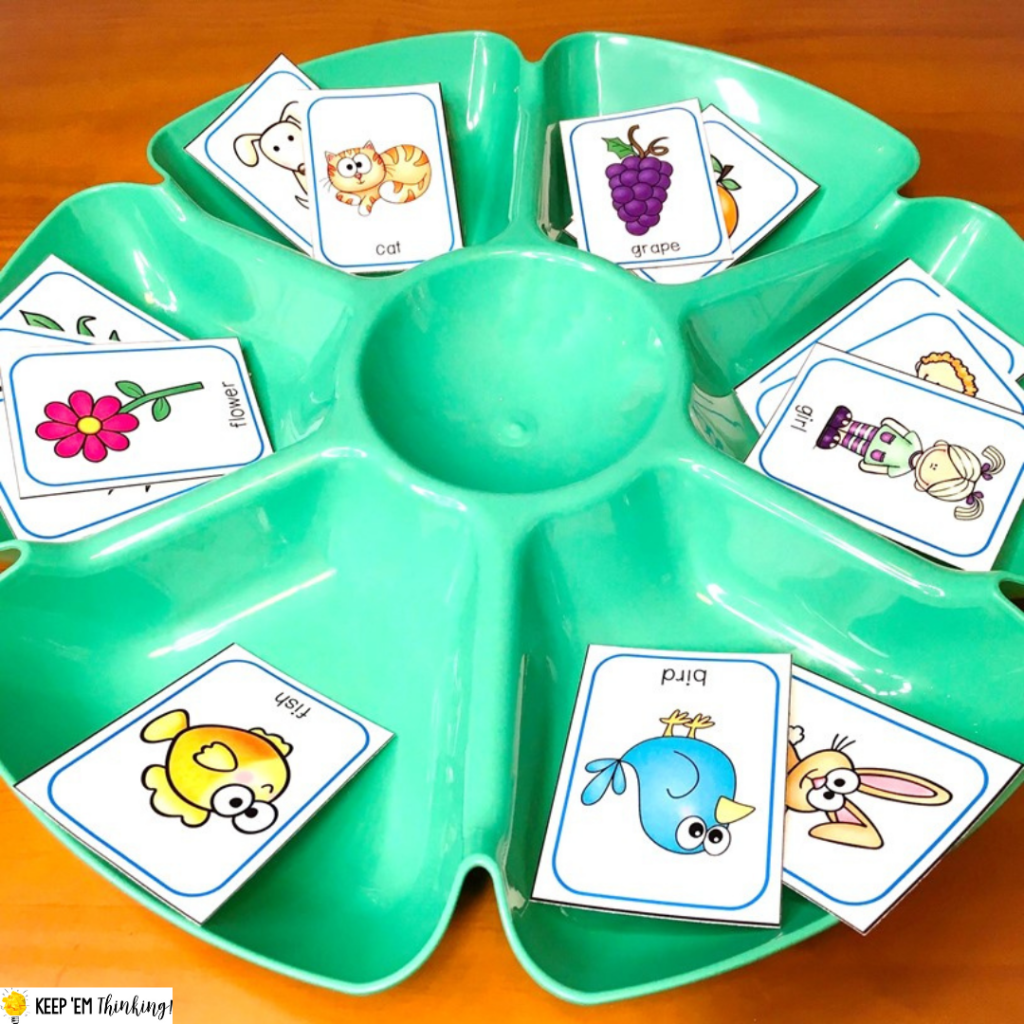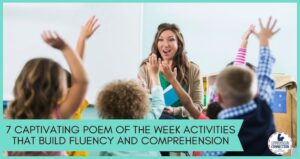Broad vocabulary skills are essential for overall success in a variety of topics within English Language Arts. There are plenty of ways to teach basic vocabulary but the key to making them stick is by making them extra FUN! If you’re looking for new and exciting ways to teach vocabulary, you’ve come to the right place. Today I’m sharing 5, fun ways to boost vocabulary development in the primary grades!

Why Vocabulary Matters
As teachers in the primary grades, we touch on so many valuable topics throughout the year. But what makes vocabulary development so crucial? I’m sure it comes as no surprise to you that having a broad vocabulary is absolutely critical to reading comprehension. We know that the more words children learn, the more information they can absorb and comprehend from books.
This is so valuable in the primary classroom when your children are just getting their feet wet with more advanced reading. Most teachers carry a deep love of reading and want to pass that along to their students. Growth in vocabulary will help to foster that deep love of reading as your students grow in confidence and ability. The more words you help your students learn, the more they can get out of their reading assignments!
How To Present Activities For Vocabulary Development
The best way to help students learn is by making sure the activities you choose are fun and engaging.
This is so true with vocabulary! Long-passed are the days of endless flashcards and worksheets to learn new words. We know we can support our students best by presenting them with activities that are appealing, engaging, and fun to participate in! So, what do you say, ready to level up?
I’m a big fan of hands-on learning games in the classroom and vocabulary-focused lessons provide so many great options. When choosing activities, keep in mind that you’ll want to have some variety and offer options for students at differentiated levels. Keep it challenging, but not so far overboard that your students can’t be independent. Here are a few of my favorites to get you started!
1. Read Picture Books for Vocabulary Development
If you’re a teacher in the primary grades, chances are you’ve got your fair share of picture books. Most often, seasonal or themed picture books are used in the classroom for read-alouds but they can also be a great way for students to learn new vocabulary. Many picture books have a more advanced reading level and will present many opportunities for your students to learn new words. I have MANY favorites but here are my top three picks for vocabulary development:

- Miss Alaineus by Deb Fraiser is my favorite vocabulary book. This one is funny and super engaging to students. In my room, I like to let my kids have a vocabulary parade after reading the book- just like in the story! This extension activity is a great way to use this book for a whole group lesson.
- Max’s Words by Kate Banks is a fantastic read for focusing on new vocabulary. This silly story follows a boy named Max as he builds a collection of words from newspapers and magazines. Students will love this story and learn lots of new words along the way.
- Finally, we can’t forget Animalia by Graeme Base. Each page is filled with glorious images highlighting a letter. Students can try to find as many images as they can on each page that begin with the focus letter. This is a great early finisher center activity for 4th and 5th graders.

These are just a few of my favorites but are so many great other ones out there. Here are a few more to keep an eye out for as you build your collection of vocabulary-focused picture books:

- Weighty Words Too by Paul Levitt
- Stegothesaurus by Bridget Heos
- The Word Collector by Peter Reynolds
- A Walk in the Words by Hudson Talbot
- Lexie the Word Wrangler by Rebecca Van Slyke
- Noah Webster and His Words by Jeri Chase Ferris
- Donavan’s Word Jar by Monalisa DeGross
- Hornswoggled by Josh Crute
- The Right Word by Jen Bryant
- The Boy Who Loved Words by Ronni Schotter
- The Word Collector by Sonja Wimmer
- Fancy Nancy by Jane O’ Connor
- Thesarus Rex by Laya Steinberg
2. Use Word Sorting Games
One of my favorite ways to target vocabulary skills is through word sorting and classification games. Providing opportunities for students to classify words is a great way to promote higher-level thinking and build grammar skills as well! Some of my favorite activities for this focus on Classifying and Sorting Common Nouns.
Working with common nouns provides students with new knowledge on how to sort items by group and explain the relationship between the objects. We start these activities by working with picture word cards and category labels. Students will work independently or in groups to categorize the words into the appropriate group. This is a great opener activity to introduce the nouns you’ll be working with.
Next, we move on to other activities that use these words. We play card games that focus on specific classification skills as well as activities that ask children to use critical thinking to identify items that don’t belong in a group. Finally, we round out the activities with follow-up worksheets that give a final review of what we’ve covered. I’ve found that using this blend of activities provides the most opportunity for vocabulary development and retention of new words.
3. Play Board Games for Vocabulary Development
I have always loved using board games in the classroom and these come in especially handy when focusing on vocabulary. These are 3 of my favorite board games to use in the classroom. I often see these at stores like Walmart and Target for very low prices, so keep an eye out!
Scrabble is likely the most classic vocabulary game and for good reason! This one will really get your students thinking. I like to split students up into groups and let them play this game as a Fun Friday activity. The more you play this game, the more they’ll get the hang of it and develop word-building skills. I like to have students write down words they build in their grammar journals to help keep track of what they have used over time.
Scattergories is another great option for the classroom. This game is a bit more advanced and might require your assistance so, I recommend trying this one in small groups until your kiddos get the hang of it. The object of this game is to come up with words that fit a specific letter and a category theme before the time is up.
Boggle is always a student favorite! If you’ve never played it before, it’s a 2-person game that focuses on finding the most words on a grid before the time is up. Students will start the timer and then write down as many words as they can find before the time is up! As a heads up, this one can get noisy so plan to use it at an appropriate time in your classroom schedule.
4. Make Alphabet Books
One of my favorite, simple activities to do as a class is make alphabet books. To do this, you will choose a theme and make a page for each letter of the alphabet. I like to do these as class books, where everyone contributes a page but you can also have students work on a page a day to create their own books.

As far as the theme goes, the possibilities are endless. You could do transportation, food, plants, seasonal themes, or animals. This is especially fun after reading Anamalia if you’re focusing on an animal theme!
To get started, choose your theme, assign letters, have your students come up with their words, and draw an illustration. I also like to have them write 2-3 sentences about their word. This could be facts about the word or simply using the word in the sentences. When everyone is done, you can bind the pages together and read the whole thing to your group. I recommend laminating the pages as well if you’re planning to store them in the classroom library!
5. Teach Synonyms for Vocabulary Development
Finally, I have one more fun idea for you to try! Teaching synonyms is a great way to help students learn new words and grow their vocabulary. A common one we work on in the primary classroom is synonyms for the word “said”. You may have heard of “said is dead” activities to target this. In my classroom, I love to use writing dialogue activities to work on this.
To do this, I like to start out with a slideshow that features a silly story all about animal dialogue. As you go through the slideshow, each animal featured will use a different synonym for said. This is a great way to introduce these new words in a fun and captivating way for students. My kiddos always get a kick out of this story and all the ways we can say said.
Next, I like to move on to using some task cards that allow students to work with some of the new words we learned. The task cards feature a picture and dialogue using the word said. Students must choose the word that would best replace the word said in each scenario. These are great for small groups, centers, and even whole group instruction.
Finally, I like to have my students put the words they’ve learned to use in their own stories! For this, I use silly picture prompts and ask students to write their own stories using some of the said synonyms we learned. The pictures in our writing prompts are real photos of animals. Students LOVE these prompts, and really enjoy coming up with silly stories to support them!
Get Started With Fun Vocabulary Activities In Your Room
You can find a variety of fun and engaging vocabulary activities for the primary classroom in the Keep ’em Thinking store on Teachers Pay Teachers.
Have fun planning your vocabulary activities and don’t forget to add variety and keep these FUN! Hands-on learning, games, and fun picture books are a great way to support your students in vocabulary development while keeping your lessons engaging!
Save This Post
Don’t forget to save this post on your classroom Pinterest board so you’ll have all these ideas at your fingertips!













